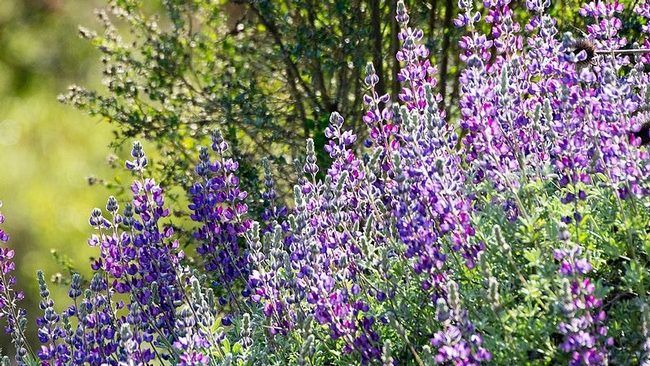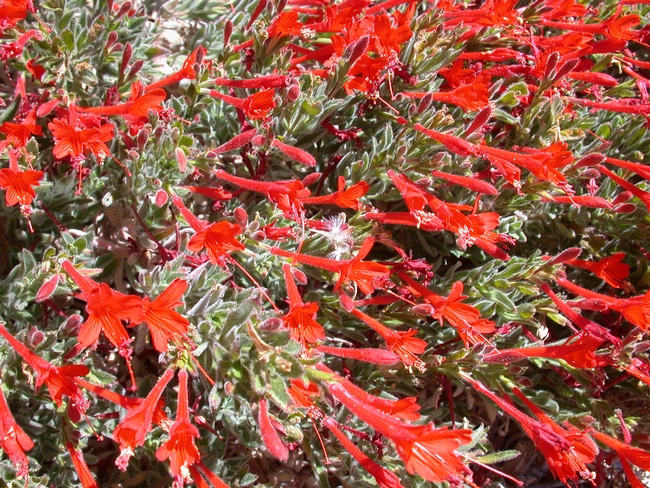By Jeff Oster, UC Butte County Master Gardener, November 10, 2017.
Note: This is the third in a three-part series on native plants that have proven successful on the author's property along the Lindo Channel in Chico. The previous articles discussed large trees, small trees and large shrubs.
California Wild Rose, Silver Lupine, and California Fuchsia are all smaller shrubs that provide flower color and foliage interest while also offering food and habitat for wildlife in our area.

If planted in dry light shade, California Wild Rose needs no supplemental irrigation, but if planted in full sun, extra water will be necessary. It is adaptable to many soil types, and is useful as a barrier plant and soil stabilizer. Any all-purpose plant food will keep it healthy, flowering, and attractive all year. It is immune to mildew and rust.
California Wild Rose provides excellent nesting and shelter habitat for songbirds and attracts butterflies. The flowers support many pollinator species; after bloom, wild rose hips persist on the plant and are an important food source for birds and mammals.

Plant Silver Lupine in full sun with good drainage and some water (performs best on the dry side). This plant prefers well-drained soils with a pH of 6 to 8. The life span of Silver Lupine is about 6 years; plants fix nitrogen and will often reseed forming small colonies. This makes it a good choice for erosion control or planting on a rocky slope.
Silver Lupine is a specific host to the Mission Blue Butterfly. It also attracts other butterflies, bees, and birds (including quail). It is deer resistant; but it is important to note that Silver Lupine is toxic to livestock.
California Fuchsia (Zauschneria californicum or Epilobium canum)is a low-growing shrub with bright orange to red flowers and gray or green leaves. This plant grows where there is extra moisture in the winter and spring, with the soil gradually drying through fall. California Fuchsias prefer a cool but sunny location, but will tolerate part shade or hot sun with moisture. Summer watering is necessary the first year. By pruning or mowing established plants in winter, the shorter varieties will stay very low at three to six inches high, otherwise growing to two feet. Plants will spread three to six feet across and boast hundreds of bright red one- to two-inch flowers from late summer to fall.

California Fuchsia can seed abundantly, and be used to stabilize banks, sometimes becoming invasive.
This plant is a magnet for hummingbirds and also attracts bees. It will tolerate deer damage, and is bothered by very few pests unless grown in large numbers.
The following two charts refer to plants referenced in the three part series on native plants that thrive in Chico and Lindo Channel.